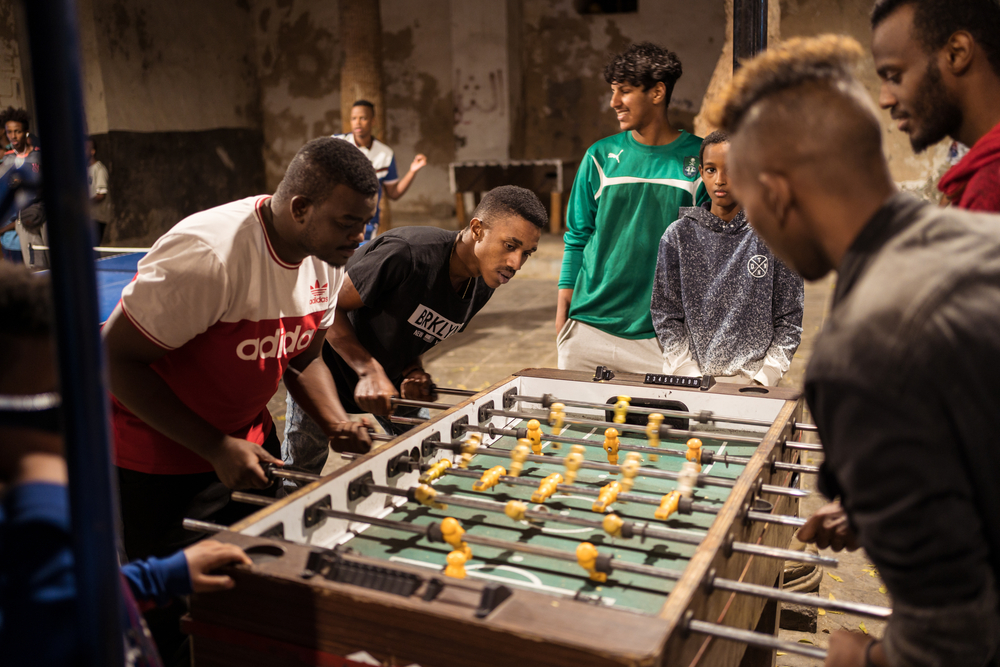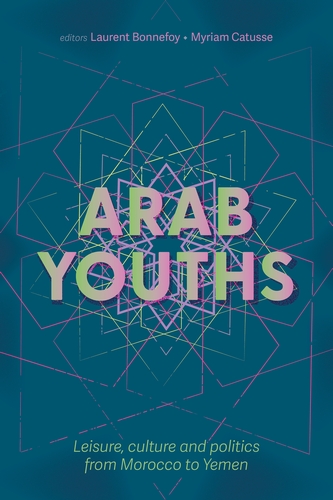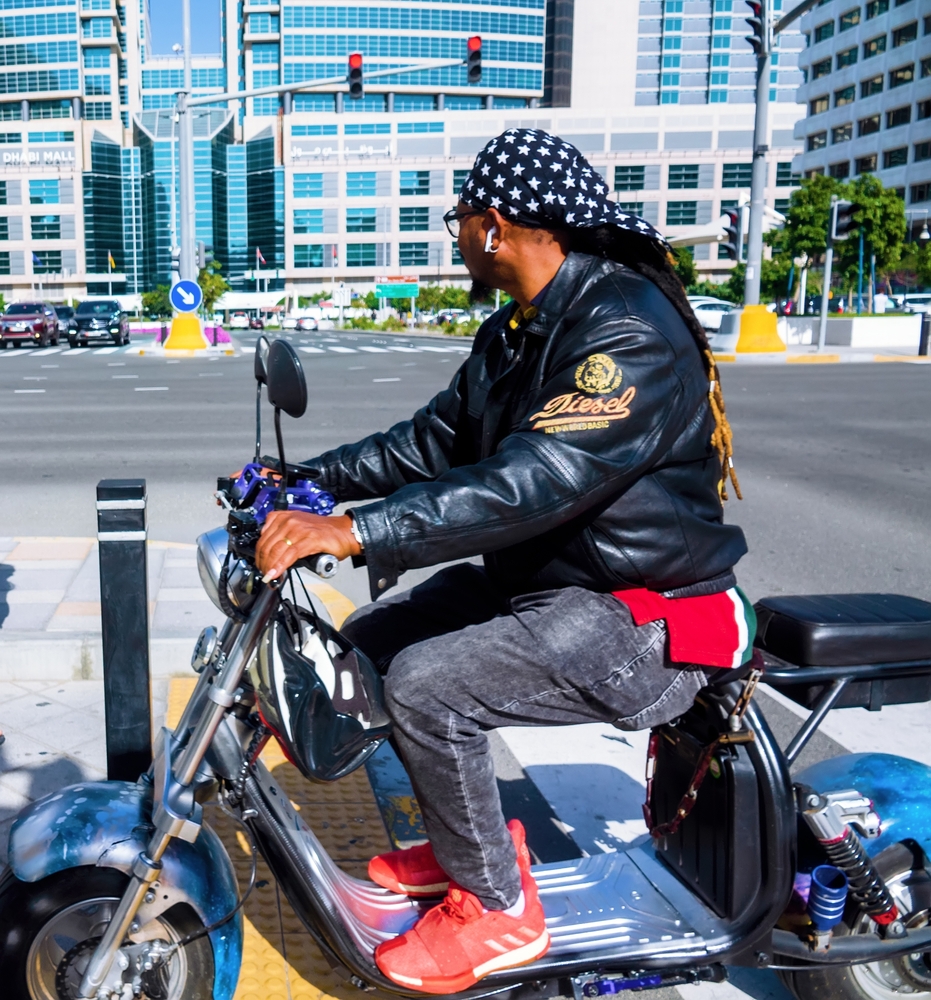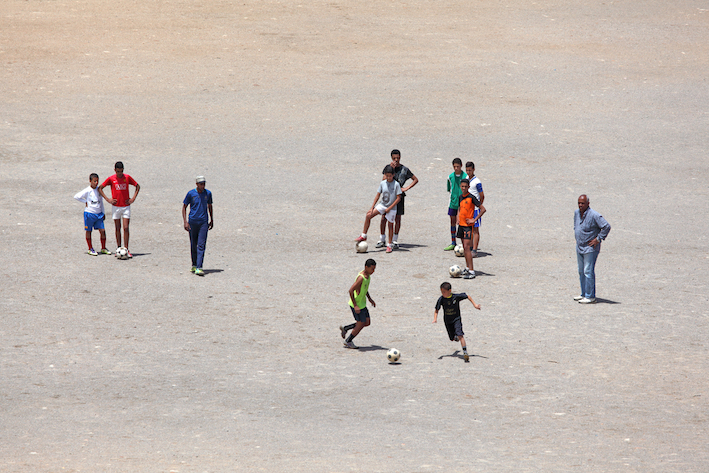Rock the Casbah! Arab Youth and Leisure: An Interview with Laurent Bonnefoy

Who are young Arabs and how do they spend their free time? In a rich and original volume entitled Arab youths. Leisure, culture and politics from Morocco to Yemen (Manchester University Press, 2023), Laurent Bonnefoy and Myriam Catusse (eds) challenge clichés and common preconceptions on Arab youths. Focusing on leisure activities in more than fifteen Arab societies, the contributors to this volume offer a great panorama—exploring leisure activities ranging from rap and rock music to women’s self-defence classes and football—of a population of youth that is too often reduced to the figures of potential terrorists or migrants. Laurent Bonnefoy presents the book and why it is so topical.
How did the idea of this book on young people’s leisure activities in Arab countries emerge?
The project followed from an enthusiastic discussion with Thomas Deltombe, editor at La Découverte, the publishing house that eventually published the edited volume in French back in 2013. Our conversation occurred at a time of euphoria, following the Arab Spring when many felt we needed to better understand the young people who had taken to the streets, had challenged Arab authoritarian regimes, and were changing the face of a region, and potentially of the world.
Beyond the political dimension that was made visible and analysed in numerous academic publications, what were Arab youths’ daily ways of socialising? What were their shared or specific references? Their dreams? How could one grasp the different meaningful forms of popular culture?
We started off with the hypothesis that the issue of free time and of apparently insignificant leisure activities was both unexplored and yet meaningful. We also thought that, in a way, it was fun to focus on such objects. We thus saw this opportunity as an interesting way of sharing our excitement for what was unfolding before our eyes! Obviously, we were immediately aware that our project could not be comprehensive and that the very concept of youth, as much as Arab identity, is fluid. We nevertheless considered it as an original, accessible, and yet thought-provoking entry point. Ten years later, as the English translation is finally made available, we still believe so!
What can you tell us about the various contributors and the way they have worked on this issue?
Myriam Catusse and I sought to mobilise colleagues, often young themselves, in order to reflect on and analyse more than thirty leisure activities in over fifteen countries. We both had our own biases and networks—hers were focused on Morocco and Lebanon, mine on the Arabian Peninsula. We therefore managed to assemble a broad team of contributors with different disciplinary profiles and approaches.
As coeditors, we started off by asking the contributors what they felt were interesting, surprising, or important leisure practices that they had seen in their respective fields. Many of them, originating from the societies they were writing on, even decided to reflect on their own practices of free time, whether dancing, sports, music, shopping, or even camping.
Some contributors were in the field back then and took a step aside, collecting new material. Others just had to re-explore some of their notes with a new perspective, looking for example at practices of leisure among Salafis, well-off students, or unemployed men. While some had been focusing on leisure practices for a long time, most were in fact writing for the first time on such activities. Rather than considering this a drawback, we believed that this was an asset because it allowed for fresher, more spontaneous, explorations.
Beyond leisure activities, you mention in the general introduction that there are many clichés about young Arabs and that one of the objectives of the book is to “shake up (these) clichés”. Can you tell us more? What surprised us first was the scarcity of academic research available on the topic of leisure in Arab societies back then. Only a few books could be counted, be they in French, English, or Arabic. While much had been analysed on the socio-economic conditions of Arab youths and on their political and religious commitments, in particular processes of mobilisation, little had been said on free time in that region of the world. Evidently, monographs—like that of Lara Deeb and Mona Harb on Beirut (Leisurely Islam: Negotiating Geography and Morality in Shi‘ite South Beirut) or of Carl Rommel on Ultras in Egypt (Egypt’s Football Revolution: Emotion, Masculinity, and Uneasy Politics)—have been published since the French version of our book came out, but I still believe that the book continues to fulfil the objective of challenging a number of clichés.
What surprised us first was the scarcity of academic research available on the topic of leisure in Arab societies back then. Only a few books could be counted, be they in French, English, or Arabic. While much had been analysed on the socio-economic conditions of Arab youths and on their political and religious commitments, in particular processes of mobilisation, little had been said on free time in that region of the world. Evidently, monographs—like that of Lara Deeb and Mona Harb on Beirut (Leisurely Islam: Negotiating Geography and Morality in Shi‘ite South Beirut) or of Carl Rommel on Ultras in Egypt (Egypt’s Football Revolution: Emotion, Masculinity, and Uneasy Politics)—have been published since the French version of our book came out, but I still believe that the book continues to fulfil the objective of challenging a number of clichés.
Among these, worth highlighting is the alleged centrality of forms of socialisation or control of youth through the state, religion, or traditional actors, including tribes for instance. One could also mention the idea of a certain stability in the forms of leisure practices and a form of apathy and aloofness that, before 2011, may have been used to explain the persistence of dictatorships. On the contrary, what the chapters in this book highlight is the fact that religion and traditions often appear as rather marginal when it comes to structuring leisure. One can also say that authoritarian regimes are almost absent: regimentation through leisure is the exception despite the huge resources governments mobilise to control their societies. Schools are also rather absent.
What struck us then is the creativity of youth groups, the fragmentation of their activities through a number of fascinating subcultures. We were also fascinated by their autonomy, while evident differences exist between classes, societies, and genders. This very diversity—and our willingness to put youths in plural form—is in itself a challenge to clichés that remain prevalent in the media and elsewhere.
The focus on leisure is certainly not one that is dominant among social scientists. Everyday life is not always considered a legitimate object… How have you tackled this issue?
Myriam Catusse and I come from a political science background, and so do a significant proportion of the authors of our volume. It is true that interest for the everyday lives of lay people can sometimes be considered as something that is rather marginal in our discipline which has dominantly set its focus on decision makers, power struggles, mobilisations, and “big” events. Nevertheless, we can also point out that disdain for the everyday lives of individuals is probably less true in the French-speaking academic field than across the Channel or the Atlantic where boundaries between disciplines play out more sharply. Interdisciplinary approaches are ones that have for a long time been valued here and mixed methods are almost a given in our field.
Consequently, from the onset of this project, we really believed in the relevance of compiling a series of short chapters and snapshots in order to give some sense to the diversity of the way free time is spent in contemporary Arab societies. All of us praised and valued the centrality of field research and considered the critique of positivism as a starting point. Consequently, I think that all the contributors, stemming from all the social sciences, felt at home with the format and an approach that cares for the ordinary, looks at bottom-up practices, and also agrees that, as researchers, we needn’t only analyse movements or practices that we agree with.
I also tend to believe that it is this very dimension—interdisciplinarity—that gives the edited volume an added value on the international market of books in English. In a context that is shaped by bad news and pessimism, the failure of the political processes launched in 2011 in the Arab world, and anxiety, one can also agree that despite not systematically being progressist leisure practices or ones readers can automatically sympathise with, the overall focus on fun, ties that bind, pop-culture, is certainly constructive and sheds light on dynamics that are otherwise kept under the radar.
It took us some years to obtain the full translation of this book. Despite many mismatches, we have always been convinced that an English version of Jeunesses arabes, even years after its initial publication, would find its readership. Would you mind telling us why this book, this subject is still topical?
 Young man on a motorbike, Abu Dhabi, February 2023. Photo by Maximilian Cabinet for Shutterstock
Young man on a motorbike, Abu Dhabi, February 2023. Photo by Maximilian Cabinet for ShutterstockThis is all the truer since Myriam Catusse and I never doubted that the successive chapters remain spot on in 2023. They still can inform a wide readership of people with different levels of knowledge regarding Arab societies about what is at stake when it comes to free time, the interactions between generations and social groups. As we highlight in our revised and updated introduction, we consider that the book is not only a snapshot or a testimony of the enchanted parenthesis that followed the Arab Spring when everything appeared possible. It is more than a much-needed breath of fresh air in a context that is bluntly depressing and generates pessimism when it comes to Arab societies.
Indeed, what the chapters stress are dynamics that remain relevant and have generally gained momentum since the French version came out: reflections on gender and sexuality, transnational sports, and the difficulties of becoming autonomous subjects have really emerged through the years. Over the last five years, changes in Saudi Arabia and the development of public policies focusing on leisure and its economic dimensions is for example a good illustration of the maintained relevance of the book, if not its insight. The centrality of sports is a good example.
Evidently, one could think some figures that are highlighted in the chapters have lost some relevance or are now somewhat out-of-fashion, symbolising a past generation, like the hittist unemployed in Algeria, or the Islamist joyrider in Saudi Arabia. One could also pinpoint the emergence of new practices linked to electronic music or rap, or to the commodification of local sports. As such, these could legitimise a follow-up to our Arab Youthsvolume, without yet erasing the relevance of the dynamics at play, nor the way these case studies are organised.
The collection of chapters, which can also be seen as independent from one another, does indeed make a point since they all highlight shared aspirations. Can you tell us about the general outline of the volume, how it is structured?
Despite the diversity of the leisure practices that are explored and the horizons of the thirty-eight authors, we did spot a number of trends that structured our analysis. First, one can think that each generation sees the emergence of a number of symbolic figures—not only content creators on the internet, queer fashionistas, for instance, but also Salafis, who embody particular leisure activities. At the global scale, these are certainly not unique. They are however emblematic of a context that each contributor wanted to take into account. Young men playing football in Morocco, May 2021. Photo by philip Lange for Shutterstock
Young men playing football in Morocco, May 2021. Photo by philip Lange for Shutterstock
What we also pinpointed was the fact that many contemporary leisure activities in the Arab world appear to be connected to a certain form of nostalgia for lost worlds, a trend that may appear surprising at first but which makes sense when connected to political perceptions of glorious pasts: finding disappeared bookshops in Bagdad, reinventing Palestinian traditional dances, etc.
A third line of structure is connected to the difficulties of building one’s own individuality in a context of social conservatism. Evidently, the fact that each individual needs to struggle to gain their independence is not a unique feature. We, nevertheless, considered that it was a remarkable dimension exemplified in self-defence classes in Cairo or also in the role of public space for Palestinian refugees in Lebanon.
A fourth and final dimension links leisure activities to political mobilisations. Evidently, this emphasis was in part due to the context of the Arab Spring—antecedents of the revolutions were to be found in rock bands in Morocco and the uprisings were embodied in street-art in Yemen as much as in youth clubs in Bahrain. Retrospectively—and after the failure of the Arab Spring, what strikes us is that it is though these maintained modes of resistance, often quiet and ordinary, that a hope for transformation is preserved and that, we as social scientists, can also keep faith in the societies that we observe, analyse and also, to a large extent, sympathise with.
Interview by Miriam Périer.
Cover iIllustration: Group of young men playing tablefoot in Jeddah, Saudi Arabia, January 2020. Photo by The Road Provides for Shutterstock










